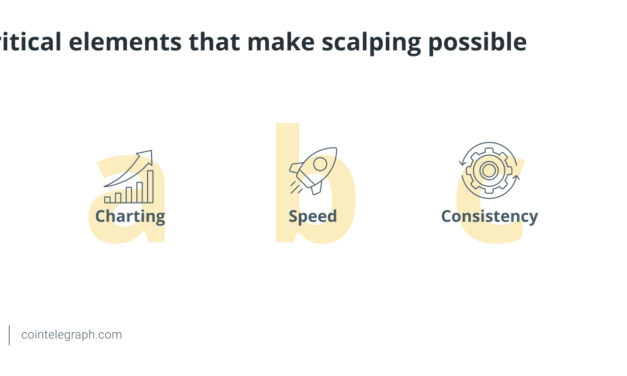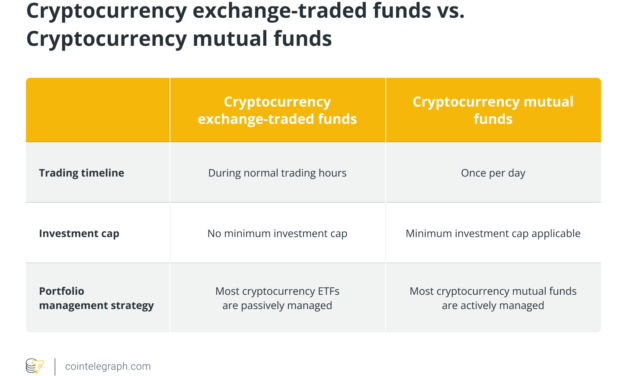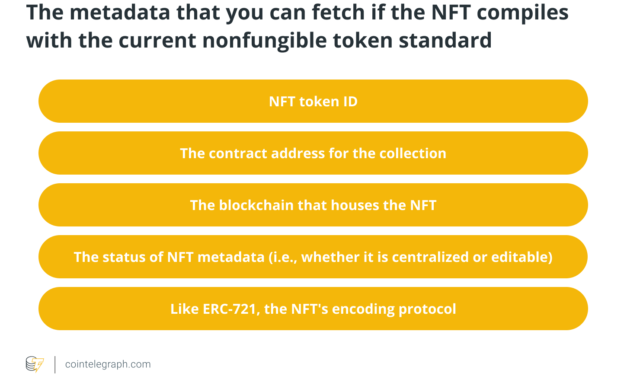What is scalping in crypto, and how does scalp trading work?
Although cryptocurrencies are known for their volatility, they give traders various opportunities to pocket and reinvest the gains. Scalp trading is a crypto strategy that helps scalpers to take risks and make the most of frequent price fluctuations by observing price movements.This article will discuss scalping, how it works in cryptocurrency, the advantages and disadvantages of scalp trading in crypto, whether it is complicated and how much money you need to engage in it.What is scalp trading?Crypto scalp traders target small profits by placing multiple trades over a short period, leading to a considerable yield generated from small gains. Scalpers step in for highly liquid and significant volume assets that result in greater interest owing to the news.Scalping strategies require knowledge of the market even though it is a short-term trading strategy. To capture the difference between supply and demand, scalpers use a spread, which involves buying at the bid price and selling at the asking price. If traders are prepared to accept market prices, this approach permits making a profit even when orders and sales are not changed.How does scalp trading work?Charting, speed and consistency are the critical elements that make scalping possible. For instance, scalpers use technical analysis and various value gaps caused by bid-ask spreads and request streams. Scalpers generally operate by creating a spread, or buying at the bid price and selling at the asking price, so that value distinguishes between the two value centers. Crypto scalpers try to hold their positions for a brief time, reducing the risk associated with the tactic.Additionally, traders that utilize scalp trading techniques must respond quickly to capitalize on the minutes — or even seconds — of short-term volatility. In this manner, scalpers can reap benefits over time continuously. But how do crypto scalpers make money?The different scalp trading tools used by crypto scalpers to reap gains include leverage, range trading, and the bid-ask spread, as explained below:Leverage: Leverage describes how much traders contribute from their pockets to increase their margin. Some scalpers use this method to increase the size of their position.Range trading: Scalp traders who engage in range trading watch for trades to close inside predetermined price ranges. For instance, some scalpers utilize a stop-limit order, which executes the trade at future market values.Bid-ask spread: By employing this strategy, scalpers can take advantage of the significant price discrepancy between the highest bid and lowest ask.Arbitrage: By purchasing and selling the same asset in different marketplaces, arbitrage scalpers can benefit from the price difference.How to set up a crypto scalping trading strategy?To set up a crypto scalp trading strategy, follow the simple steps below:Choose the trading pairs: Considering the volatility and liquidity of crypto assets, choose a trading pair that suits your risk-return investment profile.Select a trading platform: While selecting a trading platform that offers your chosen trading pair, consider various aspects like trading fees, interface, customer service, etc.Choose scalper bots: The foundation of scalping is speed; therefore, those who trade utilizing software are constantly in the lead. Also, the manual management of an investment portfolio is typically time-consuming and error-prone.Try various trading strategies: Before scalping, ensure you understand your strategy well by trying different trading techniques, as mentioned in the section above.Related: The most common crypto metrics: A beginner’s guideAdvantages and disadvantages of scalp tradingAll trading strategies have pros and cons, and scalping is no exception. For instance, the risk in scalping is low due to the smaller position sizes involved. Moreover, crypto scalpers do not try to take advantage of significant price moves. Instead, they struggle to take advantage of small moves that occur frequently. However, because the rewards from each trade are so little, scalpers search for additional liquid marketplaces to increase the frequency of their trades. According to economists, being optimistic about scalping may not be beneficial. For example, there isn’t a single tested method that ensures success in at least 90% of scalp trading situations. Similarly, if something seems too good to be true, it probably is—especially in crypto trading.Furthermore, scalping frequently requires advanced analytical skills, although traders do not necessarily need to be patient with consistent price fluctuations. In addition, please bear in mind trading fees, which may be high, depending upon your trading volume.Scalp trading vs. day tradingIn contrast to long-term hodling, day trading encourages the trader to concentrate on minute price changes. So, how is day trading different from scalp trading?Related: Day trading vs. long-term cryptocurrency hodling: Benefits and drawbacksA scalping trader holds a financial asset for less than 5 minutes and can typically maintain a deal for 2 minutes. On the other hand, day traders hold trades for several hours. Moreover, crypto scalpers open 10s or 100s of trades daily to reap significant gains. In contrast, day traders are limited to a small number of daily trades. In addition, day traders occasionally rely on fundamental analysis, whereas scalping requires knowledge of technical analysis. Scalp trading is also different from swing trading as scalpers hold trades for a few seconds to minutes, whereas swing traders typically maintain their positions for a few days to weeks, even months. Additionally, swing trading involves reasonable monitoring and current knowledge of news and business events, whereas scalping necessitates constant monitoring throughout the trading session.Is crypto scalp trading worth it?Developing your ability to interpret charts and expanding your understanding of various crypto trading tactics are the keys to becoming a good crypto scalper. In general, scalp trading can be aggressive and demanding and may be highly draining for untrained brains. Because the return from each trade is too small, more substantial capital is required to produce meaningful outcomes. And, of course, as there is a “no one size fits all” crypto trading strategy, one should utilize the techniques that best fit their risk-return portfolio. A lack of confidence in one’s abilities while dealing with risky assets may prove unproductive in the long run. The most crucial lesson for scalpers to learn is likely risk management. Compared to choosing entry and exit points, choosing how to manage risk can have a much more significant impact on the financial performance of the investment portfolio.Purchase a licence for this article. Powered by SharpShark.
Čítaj viac






